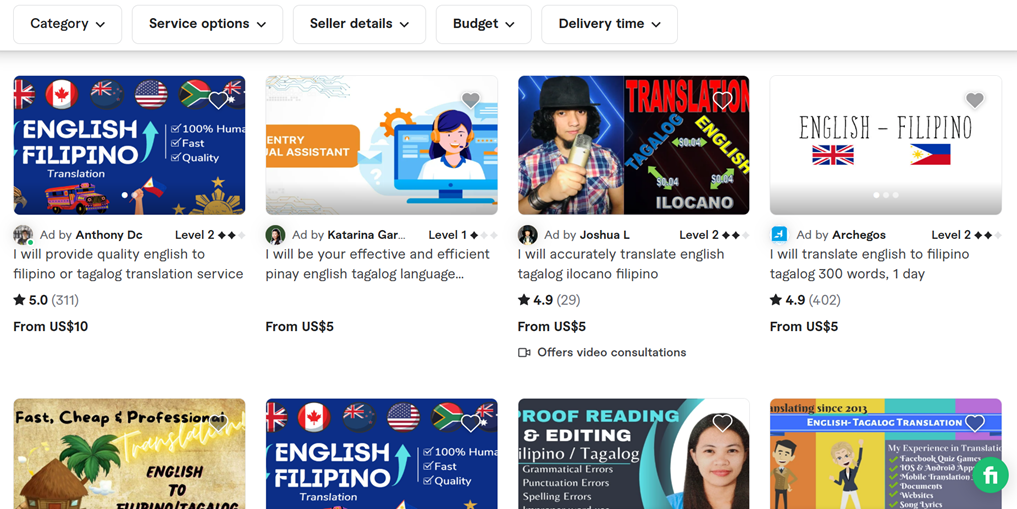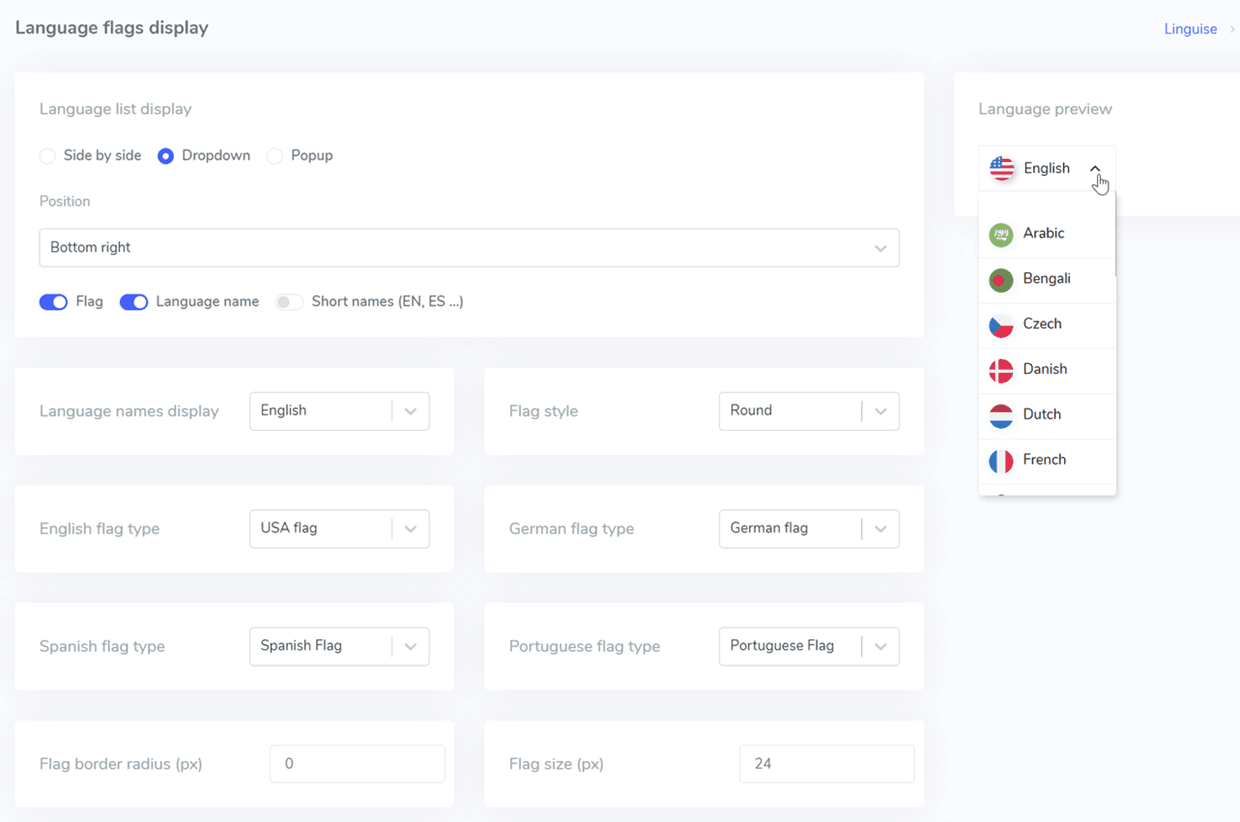Translating your website from English to Tagalog opens the door to a vast audience of approximately 83 million Tagalog speakers, primarily in the Philippines, where this language forms the foundation of Filipino, the national language.
By translating their websites into Tagalog, businesses can more effectively connect with this audience, tapping into their preferences and cultural context. With such many speakers, Tagalog offers immense opportunities for businesses looking to expand their digital presence in the Philippines. Explore how to translate websites from English to Tagalog and unlock the potential of this dynamic market!
What are the available methods for translating a website from English to Tagalog?

Translating a website from English to Tagalog is crucial for businesses looking to connect with the vibrant and culturally rich Filipino audience. With over 83 million speakers, translating into Tagalog allows you to make your content accessible and relatable to this significant market. Here are some of the most effective methods to translate your website into Tagalog.
Human translation (Tagalog translator)
Opting for human translation involves hiring a professional translator fluent in English and Tagalog. This ensures precise and culturally appropriate translations that resonate with your target audience. Human translators can adapt phrases and nuances that might otherwise get lost, making the content natural and engaging. This approach is ideal for businesses prioritizing quality and ensuring their content aligns with Filipino audiences’ linguistic preferences and cultural norms.
Machine translation
Machine translation tools like Google Translate, DeepL, or Bing Translator provide a quick and cost-effective way to translate content. These tools constantly improve but may lack the accuracy and cultural sensitivity required for professional use. Machine translation is best suited for getting a rough idea of the text’s meaning but may require additional editing to ensure quality.
Automatic translation with plugins
Automatic translation services or plugins integrated into your website’s CMS can streamline the process. One plugin that allows you to offer multilingual options, including Tagalog, is the Linguise automatic translation service. These tools can automate translations, enabling quick deployment, but combining them with human proofreading can significantly enhance the final output.
How to translate a website from English to Tagalog with a Tagalog Translator?

Hiring a translator is one of the most effective options if you’re looking to translate your website from English to Tagalog. Tagalog translators can deliver culturally appropriate, natural translations that resonate with the Filipino audience. You can find translators through agencies specializing in language services or freelance platforms like Fiverr or Upwork.

Costs and process
Translation fees for English to Tagalog services typically start at around $5, though rates may vary based on complexity and the translator’s expertise. The process involves selecting a translator, choosing a package, and providing your website content (such as manuscripts or documents). Once they receive the material, the translator will work on your project and deliver the final translation.
Pros
- Tagalog translators ensure the translation is precise and adapted to cultural nuances.
- You can request specific language tone and style adjustments, ensuring the content fits your brand voice.
- Translators often offer proofreading and formatting as part of their service.
Cons
- Manual translation by a professional is more expensive than automated tools.
- The translation process can take longer, especially for large websites.
- Finding a skilled and reliable translator requires research and effort.
Choosing a Tagalog translator is ideal if you value quality and want to build a strong connection with your Filipino audience. While it requires more resources, the results can significantly enhance your website’s appeal and impact.
How to translate website from English to Tagalog using Google Translate?

Another simple and cost-effective way to translate your website into Tagalog is using machine translation tools like Google Translate. It’s free, accessible across devices, and incredibly user-friendly, making it one of the go-to tools for quick translations. While Google Translate lists “Filipino” as the language option, it’s important to note that Filipino is heavily based on Tagalog, making it an effective choice for reaching a Tagalog-speaking audience.
How it works
- Open the Google Translate website or install the Google Translate extension in your browser.
- Paste the text you want to translate.
- Select “Tagalog” as the target language.
- The tool will instantly translate your text, and you can copy the translated output.

If you want to translate an entire webpage, right-click, select “Translate to Filipino,” and watch as the page transforms into your chosen language.

Pros
- No subscription or purchase is required.
- Simple interface with no steep learning curve.
- Get translations in seconds.
- It supports Over 100 Languages, is perfect if you’re targeting multilingual audiences.
Cons
- While great for basic needs, the translations might not always capture cultural nuances or complex meanings.
- You can’t tweak or refine the translation output directly within the tool.
- It doesn’t handle complex website elements like multimedia content or formatting.
Machine translation from English to Tagalog is ideal for a quick, no-cost solution. However, pairing this method with human review is recommended for professional or culturally sensitive projects to ensure a polished and accurate result.
How to translate website from English to Tagalog using automatic translation?

The third option is to translate the website from English to Tagalog using automatic translation. Automatic translation plugins are an efficient and hands-free way to translate your website into Tagalog. These tools integrate directly into your website’s Content Management System (CMS), such as WordPress, Joomla, or Drupal, allowing you to instantly translate all or part of your site’s content into various languages, including Tagalog.
One standout plugin for automatic translation is Linguise, which supports over 80 languages, including Filipino (Tagalog-based). It’s a powerful tool that simplifies the process while delivering quick and accurate results. Here are the steps to translate your website from English to Tagalog using Linguise.
Step 1: Sign up Linguise & add your domain
Begin by creating a Linguise account and registering your website’s domain.

Specify the default language of your website (English) and the additional languages you’d like to display, such as Tagalog.

Step 2: Install and integrate the Linguise plugin
For example, if you’re using WordPress. Install the Linguise plugin directly from the WordPress plugin directory.

Once installed, integrate it with your website by pasting the API key provided by Linguise into the plugin’s settings.

After integration, Linguise will automatically add a default language switcher to your website, which you can customize through the dashboard. In this dashboard, you can customize.
- Three layout options, side-by-side, dropdown, or popup
- Language switcher position and content customization
- Language names in English or native formats
- Adjustable flag shapes, sizes, colors, and box-shadow effects
Step 3: Translate your website from English to Tagalog
With Linguise installed, translating your website is easy. Here, we will translate the website, which is still in English.

Click on the language switcher, select Tagalog (Filipino), and the plugin will instantly translate your entire website—including menus, pages, and content—into Tagalog in seconds. For example, this website is still in English.

With Linguise, you can enjoy several benefits that go beyond what manual or machine translation alone can offer.
- Translate your entire website content in just a few clicks, all within seconds.
- Customize the language switcher to fit your website’s design and user preferences.
- Utilize the live editor feature to refine and edit automatic translations in real-time.
- Provide multilingual SEO optimization to improve your site’s visibility in different languages.
By using Linguise, you streamline the translation process and unlock powerful features to ensure your website is user-friendly and SEO-ready for a global audience.
Conclusion
Translating your website from English to Tagalog is an excellent way to connect with the millions of Tagalog speakers in the Philippines. The best approach depends on your budget, timeframe, and desired level of accuracy.
A well-translated website improves user experience and strengthens your audience’s trust, leading to higher engagement and conversions. For a seamless and efficient translation process, consider using Linguise, a reliable tool that offers quick and accurate website translations tailored for Tagalog-speaking audiences. What are you waiting for? Sign up for a Linguise account and start translating to Tagalog!





